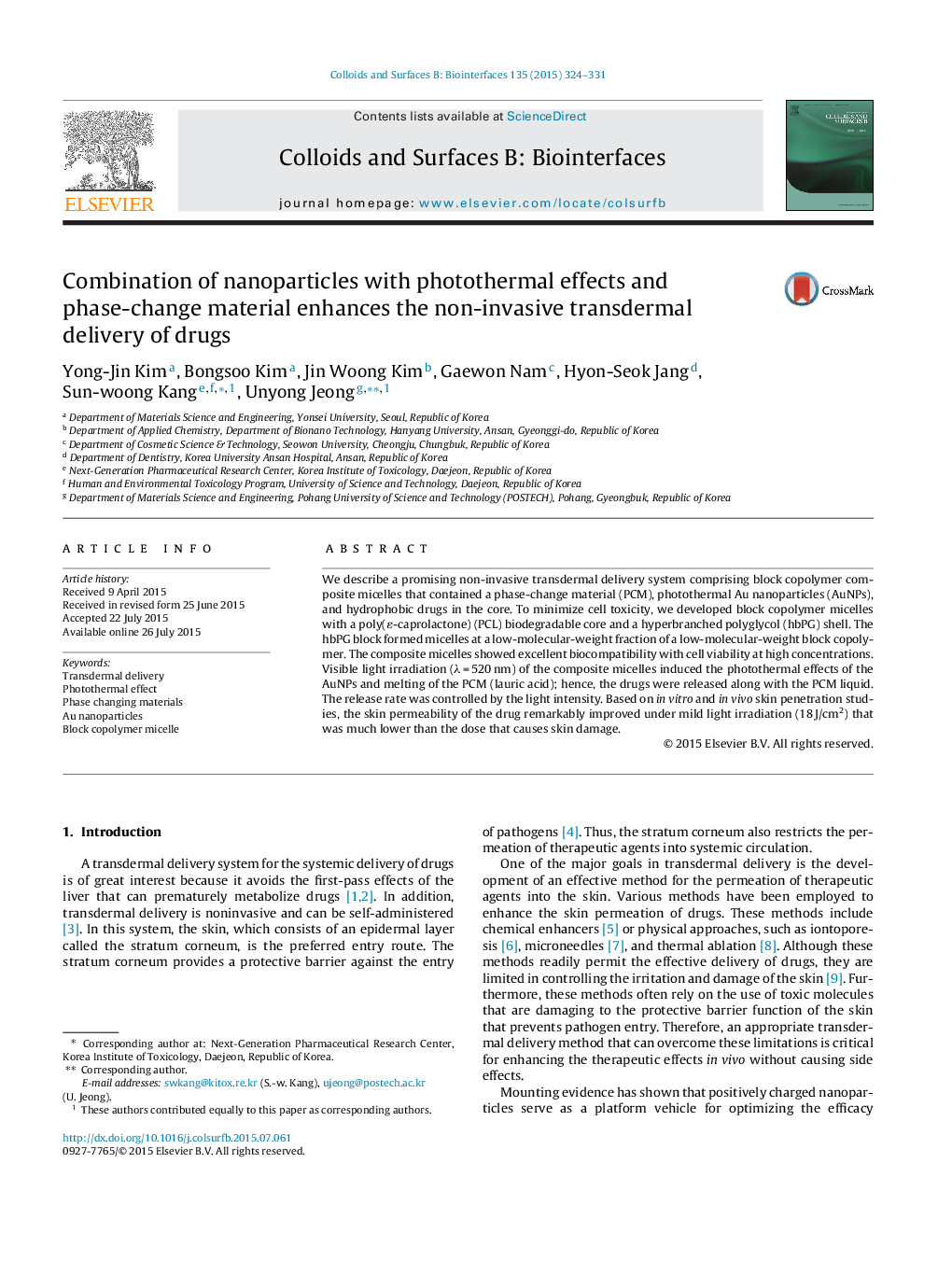| Article ID | Journal | Published Year | Pages | File Type |
|---|---|---|---|---|
| 599248 | Colloids and Surfaces B: Biointerfaces | 2015 | 8 Pages |
•Nanoparticles which contain a phase changing material (PCM), photothermal Au nanoparticles (AuNPs), and hydrophobic drugs in the core were fabricated for enhancement of non-invasive transdermal delivery.•The hyperbranched polyglycerol block allowed the use of a small fraction of the nonbiodegradable block, which is essential to minimized toxicity of the block copolymer-based micelles.•The release of the IM-loaded composite micelles could be controlled by adjusting the light irradiation time (λ = 520 nm) because of the photothermal effect of the encapsulated AuNPs.•Deep permeation of drug was allowed with treatment of irradiation for 10 min (18 J/cm2) which is lower than intensity of stimulation causing skin damage.
We describe a promising non-invasive transdermal delivery system comprising block copolymer composite micelles that contained a phase-change material (PCM), photothermal Au nanoparticles (AuNPs), and hydrophobic drugs in the core. To minimize cell toxicity, we developed block copolymer micelles with a poly(ɛ-caprolactone) (PCL) biodegradable core and a hyperbranched polyglycol (hbPG) shell. The hbPG block formed micelles at a low-molecular-weight fraction of a low-molecular-weight block copolymer. The composite micelles showed excellent biocompatibility with cell viability at high concentrations. Visible light irradiation (λ = 520 nm) of the composite micelles induced the photothermal effects of the AuNPs and melting of the PCM (lauric acid); hence, the drugs were released along with the PCM liquid. The release rate was controlled by the light intensity. Based on in vitro and in vivo skin penetration studies, the skin permeability of the drug remarkably improved under mild light irradiation (18 J/cm2) that was much lower than the dose that causes skin damage.
Graphical abstractFigure optionsDownload full-size imageDownload as PowerPoint slide
